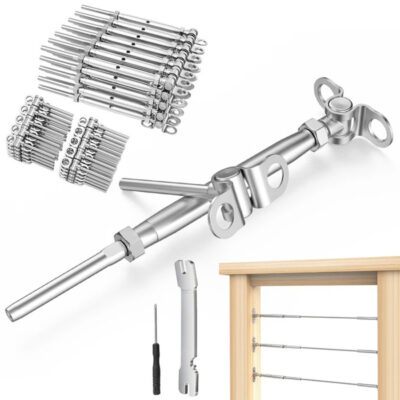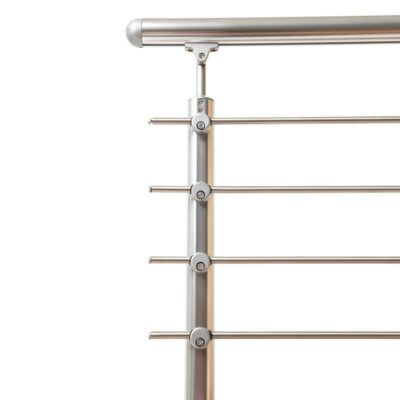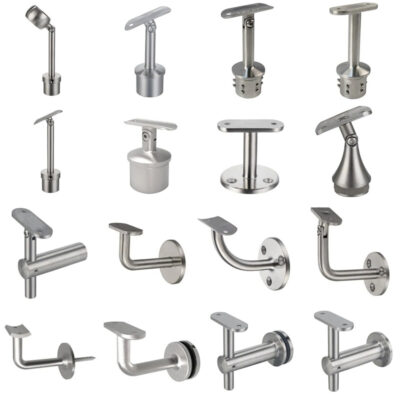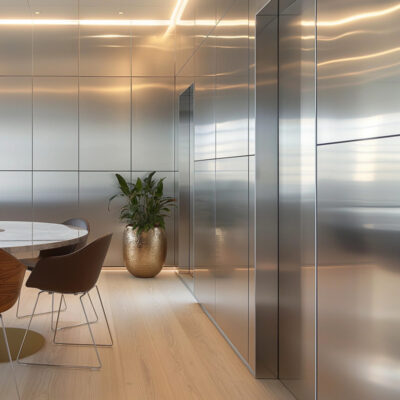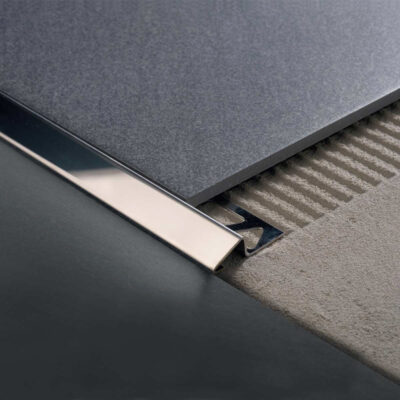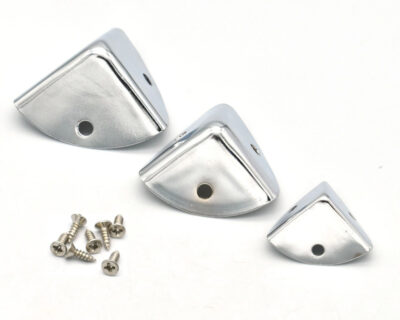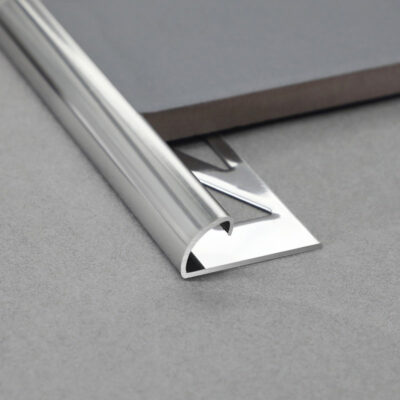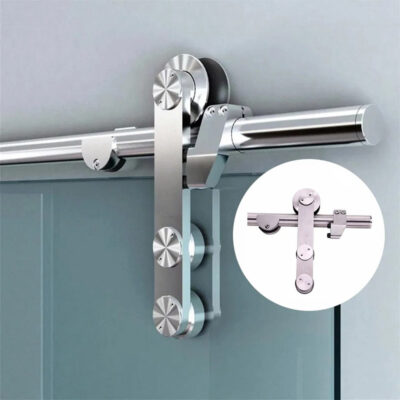The Comprehensive Guide to Stainless Steel Post Railing Systems
The moment I stepped onto that oceanfront deck in Maine, the sleek lines of a newly installed cable railing system caught my attention. What struck me wasn’t just the unobstructed view of the Atlantic, but how the minimalist design actually enhanced the panorama rather than competing with it. The property owner shared that after three previous railing replacements in ten years, this stainless steel system had already outlasted all others in the harsh saltwater environment. That conversation fundamentally changed my perspective on what modern railing systems could achieve.
Stainless steel post railing systems represent a perfect marriage of form and function in modern architecture. These systems combine structural integrity with aesthetic appeal, creating boundaries that define spaces without visually dividing them. Whether in residential decks, commercial balconies, or industrial walkways, these systems are engineered to provide safety and security while enhancing architectural design.
The Evolution of Railing Systems: From Function to Feature
Railings have existed since humans first built elevated structures. Early versions were purely utilitarian—typically wooden constructions designed solely to prevent falls. The Industrial Revolution brought iron railings, which offered improved strength but suffered from corrosion and required constant maintenance.
The introduction of stainless steel in the early 20th century marked a turning point. Developed in 1913 by English metallurgist Harry Brearley, stainless steel’s corrosion resistance made it ideal for outdoor applications. By the 1930s, architects were beginning to incorporate stainless steel elements into buildings, but these remained expensive specialty items.
Dr. Erica Morassi, architectural historian at Cornell University, notes that “the post-war building boom of the 1950s and 60s democratized stainless steel in architecture. What was once reserved for prestigious projects became accessible for commercial and eventually residential applications.”
The modern stainless steel post railing system truly emerged in the 1980s and 90s, concurrent with the minimalist architectural movement. Designers began to view railings not as necessary evils but as opportunities to make architectural statements. The development of cable railing systems in particular represented a paradigm shift, allowing for nearly unobstructed views while maintaining safety standards.
Today’s systems benefit from advances in manufacturing techniques, with computer-controlled fabrication allowing for precision cuts and consistent quality that would have been impossible to achieve by hand. This evolution has transformed railings from purely functional elements to defining features of architectural design.
Types of Stainless Steel Post Railing Systems
The versatility of stainless steel has given rise to several distinct railing system types, each with unique characteristics and ideal applications.
Cable Railing Systems
Walking through a newly completed hillside home in California, I watched as the homeowners experienced their mountain view through nearly invisible cable rails for the first time. Their reaction—a mixture of relief and joy—underscored why these systems have become so popular.
Cable railing systems use tensioned horizontal cables running between stainless steel posts. Typically employing cables between 1/8″ and 3/16″ in diameter, these systems create a modern, unobtrusive look that maximizes visibility. They’re particularly popular in locations with scenic views, as the thin cables create minimal visual obstruction.
The cables require significant tension to comply with building codes, which typically prohibit a 4″ sphere from passing between cables. This necessitates sturdy posts, usually spaced no more than 4-6 feet apart, with proper anchoring to support the tension load.
Glass Panel Systems
Glass panel railing systems pair stainless steel posts with tempered or laminated glass panels. These systems offer complete wind blocking while maintaining views, making them ideal for high-rise balconies or windy coastal areas. The glass panels are typically secured using specialized stainless steel fittings, either with standoff point fittings or continuous base shoes.
During a recent hotel renovation project, the designer switched from traditional balusters to a glass panel system for the oceanfront rooms, immediately transforming spaces that had previously felt confined and dated.
Bar and Rod Systems
These systems employ horizontal or vertical stainless steel rods or bars instead of cables or glass. Horizontal configurations offer a clean, contemporary look similar to cable rails but with greater rigidity and often lower maintenance. Vertical bar arrangements provide excellent security while maintaining traditional baluster aesthetics with modern materials.
Mesh Panel Systems
Stainless steel mesh panels create a unique aesthetic while providing additional safety, particularly in settings with children or pets. The mesh can range from fine woven patterns to more open designs, offering varying degrees of transparency and air flow. These systems have gained popularity in public spaces and contemporary homes looking for something distinctive.
The table below compares key attributes of these systems:
| System Type | Visual Obstruction | Wind Blocking | Maintenance Level | Relative Cost | Best Applications |
|---|---|---|---|---|---|
| Cable | Minimal | Low | Moderate (requires tension checking) | Moderate | View maximization, modern aesthetics |
| Glass Panel | Low | High | Low (cleaning only) | High | Wind protection, contemporary spaces, high-rise balconies |
| Bar/Rod | Low-Moderate | Moderate | Low | Moderate-High | Modern design, commercial spaces, areas requiring higher security |
| Mesh Panel | Moderate | Moderate-High | Low | High | Child/pet safety, industrial aesthetic, unique design element |
Key Benefits of Stainless Steel Post Railing Systems
Unmatched Durability and Corrosion Resistance
The primary advantage of stainless steel is its exceptional resistance to corrosion. This resistance comes from the chromium content—typically 10.5% or higher—which forms a passive chromium oxide layer that protects the underlying metal. When this layer is damaged, it self-repairs through oxidation when exposed to oxygen.
Different grades offer varying levels of corrosion resistance. Grade 304 (18% chromium, 8% nickel) is suitable for most environments, while Grade 316 (also containing molybdenum) offers superior protection in coastal or chlorinated environments. In my experience consulting for a beachfront property in Florida, the difference between these grades became apparent after just two years, when the 304 grade posts began showing signs of tea staining while the 316 posts remained pristine.
According to the Specialty Steel Industry Association, properly specified stainless steel railings can maintain their structural integrity and appearance for 30+ years even in challenging environments, far outlasting aluminum or coated steel alternatives.
Aesthetic Versatility
Stainless steel post railing systems offer remarkable design flexibility. Available finishes include:
- Mirror (highly polished)
- Satin/brushed (most common)
- Matte
- Patterned/textured
- Colored (through heat treatment or application of colored coatings)
The material complements virtually any architectural style, from ultra-modern to industrial to traditional when appropriately designed. Its clean lines and reflective qualities make it particularly suitable for contemporary spaces where light and openness are prioritized.
Minimal Maintenance Requirements
During a recent conversation with Ralph Terrazas, a facilities manager for a large corporate campus, he mentioned that their decision to invest in stainless steel railing systems throughout the property reduced annual maintenance costs by approximately 65% compared to their previous painted steel railings.
While stainless steel isn’t completely maintenance-free, its requirements are minimal compared to other materials:
- Periodic cleaning with mild soap and water
- Occasional polishing to maintain appearance
- No painting, staining, or sealing
- No rust remediation or part replacement
In high-traffic environments, stainless steel shows remarkable resilience to wear and impact, maintaining its appearance with minimal intervention.
Safety and Compliance
Stainless steel’s high strength-to-weight ratio makes it ideal for safety applications. The material’s ductility allows it to absorb impact energy without catastrophic failure, an important consideration in railing systems where sudden breakage could create additional hazards.
Most systems easily meet or exceed the International Building Code (IBC) requirements, which typically include:
- Minimum height requirements (usually 36″ for residential and 42″ for commercial applications)
- Load resistance (typically 200 pounds concentrated load)
- Opening limitations (preventing passage of a 4″ sphere)
Technical Specifications and Design Considerations
Material Selection and Grade Determination
Selecting the appropriate stainless steel grade is perhaps the most crucial technical decision when planning a railing system. The environment plays the determining role:
| Environment | Recommended Grade | Reasoning |
|---|---|---|
| Indoor, climate-controlled | 304/304L | Standard corrosion resistance is sufficient |
| Outdoor, inland | 304/304L | Good resistance to rain and standard weather conditions |
| Coastal, poolside, industrial | 316/316L | Enhanced resistance to chlorides and salt spray |
| Chemical environments | 2205 Duplex | Superior resistance to specific chemical exposures |
| Extreme coastal or marine | 904L or 254SMO | Maximum resistance for severe maritime environments |
The “L” designation (e.g., 304L) indicates a low-carbon version of the alloy, which provides enhanced weldability without compromising corrosion resistance.
Dr. Melissa Chang, materials engineer at MIT, explains: “The difference between 304 and 316 isn’t just academic. The addition of 2-3% molybdenum in 316 significantly enhances chloride resistance, which makes it up to 10 times more resistant to pitting corrosion in marine environments.”
Load Bearing and Structural Considerations
Stainless steel post railing systems must be engineered to withstand various loads. Building codes typically require railings to resist:
- A 200-pound concentrated load applied in any direction at any point along the top rail
- A 50-pound per linear foot load applied horizontally to the top rail
- Infill areas (the space between posts and rails) must withstand a 50-pound load on a one-square-foot area
These requirements influence several design elements:
Post Spacing: Typically limited to 4-6 feet depending on the system. Cable systems often require closer spacing due to the tension loads.
Post Mounting: Several mounting options exist:
- Surface mounting with base plates and anchors
- Side mounting to facing material
- Core mounting where posts are set into concrete or structure
- Fascia mounting where posts attach to the outer edge of a structure
Post Dimensions: Most commercial applications use posts with at least 2″ diameter or square tubing with 1/8″ to 3/16″ wall thickness. Residential systems might use slightly smaller dimensions.
During a renovation project I consulted on for a historic building conversion, we faced significant challenges with the existing structure’s ability to support railing loads. We ultimately developed a custom mounting system that distributed forces across a larger surface area, allowing us to maintain the desired aesthetic without compromising safety.
Connection Methods and Hardware
The connection components in stainless steel railing systems are critical both structurally and aesthetically. Common hardware elements include:
Fittings: Pre-fabricated components that join rails to posts, allowing for angles and transitions. These can be welded or mechanical connections.
Fasteners: All fasteners should match or exceed the corrosion resistance of the railing material. Using lower-grade fasteners can lead to galvanic corrosion.
Tensioners: For cable systems, specialized tensioning devices maintain the required cable rigidity.
End Caps: These finish exposed ends of posts and rails for both safety and appearance.
Welds on stainless steel require special attention. As master welder Carlos Mendez explains, “Stainless steel welding requires specific techniques to prevent chromium carbide precipitation, which can compromise corrosion resistance at the weld site. Post-weld treatments are essential to restore the passive layer.”
Installation Process and Best Practices
The installation of stainless steel post railing systems requires precise planning and execution. Having observed dozens of installations, I’ve noted that proper preparation consistently distinguishes successful projects from problematic ones.
Pre-Installation Planning
Before any physical work begins, a thorough site assessment is essential. This includes:
- Accurate measurements of all dimensions
- Evaluation of mounting surfaces and structural support
- Identification of potential obstacles (electrical wiring, plumbing, etc.)
- Confirmation of compliance with local building codes
- Verification that the system design meets site-specific requirements
For a custom home in Aspen, I witnessed an installation team spend two full days on site assessment and planning before ordering materials. This investment prevented costly errors and modifications that would have been necessary had they proceeded with standard specifications.
Tools and Equipment Requirements
Specialized tools are often necessary for proper installation:
- Torque wrenches for precise tensioning
- Metal-specific drill bits and hole saws
- Non-marring clamps and vises
- Laser levels for alignment
- Metal-specific cutting tools
- For welded systems, specialized stainless steel welding equipment
Common Installation Challenges
Even with thorough planning, certain challenges consistently arise during installation:
Maintaining Proper Alignment: Especially in systems with horizontal elements, ensuring perfectly level installation can be challenging. Laser levels and careful measurement are essential.
Surface Mounting on Uneven Surfaces: When installing on concrete or stone, surface irregularities often require shimming or custom adaptation.
Tensioning Cable Systems: Achieving uniform tension across all cables requires methodical approach and specialized tools. Under-tensioned cables fail inspection; over-tensioned cables can damage posts or connections.
Preventing Material Damage: Stainless steel surfaces can be scratched or marred during installation. Using protective films, careful handling, and proper tools helps prevent this.
Electrical Isolation: In some environments, ensuring proper electrical isolation between stainless steel and dissimilar metals is crucial to prevent galvanic corrosion.
Professional vs. DIY Installation
While some simplified stainless steel railing systems are marketed for DIY installation, most complex or custom systems require professional installation. The specialized tools, knowledge of building codes, and expertise in working with the material typically justify professional installation.
That said, I’ve encountered remarkably successful DIY installations where homeowners thoroughly researched the process and invested in proper tools. The deciding factors should be the complexity of the system, the installer’s experience with similar projects, and the tolerance for potential errors.
Maintenance and Long-Term Care
One of stainless steel’s primary advantages is its minimal maintenance requirements, but “low maintenance” doesn’t mean “no maintenance.” Proper care ensures decades of performance and appearance.
Regular Cleaning Protocols
For standard environments, cleaning with mild soap and water every 3-6 months is typically sufficient. In coastal or industrial areas, more frequent cleaning (every 1-3 months) helps prevent buildup of corrosive elements.
The cleaning method matters: Always clean in the direction of the grain on brushed stainless steel to maintain the finish. Avoid abrasive cleaners or tools that can scratch the surface and potentially damage the passive layer.
Addressing Specific Issues
Tea Staining: This brown discoloration often appears in marine environments. While primarily cosmetic, it should be addressed promptly with a specialized stainless steel cleaner to prevent potential pitting.
Scratches: Minor scratches can be addressed using stainless steel-specific polishing compounds. Deeper scratches may require professional refinishing.
Loose Components: Regular inspection for loose fasteners or connections is recommended, particularly for cable systems where tension can change over time.
During my visit to a 15-year-old stainless steel railing installation at a coastal resort in California, the maintenance supervisor shared that their quarterly cleaning schedule had preserved not just functionality but like-new appearance, despite constant exposure to salt spray and high traffic.
Case Studies: Real-World Applications
Residential Applications
Modern Hillside Home: For a cantilevered deck overlooking the Pacific Ocean, the architects selected a cable railing system with 316-grade stainless steel posts and hardware. The minimal visual profile preserved panoramic views while withstanding coastal conditions. Five years after installation, the system remains structurally sound and visually pristine with quarterly maintenance.
Historic Renovation: When updating a 1920s craftsman home, the challenge was finding railings that provided modern safety without compromising historic character. The solution was a custom stainless steel system with traditionally inspired details but modern materials. The posts were designed to mimic original woodwork but with superior weather resistance and minimal maintenance.
Commercial Installations
Waterfront Restaurant: E-Sang provided a custom glass and stainless steel railing system for a rooftop dining space exposed to harsh coastal conditions. The system incorporated tempered glass panels with minimal hardware, maximizing views while providing wind protection for diners. The restaurant manager reports that the unobstructed view has become a significant draw for customers, directly impacting revenue.
Corporate Headquarters: For a multi-story atrium in a corporate office, a mesh panel system created visual interest while exceeding safety requirements. The semi-transparent mesh created interesting light patterns throughout the day while allowing air circulation. The system required special mounting to accommodate the building’s irregular concrete structure.
Specialty Environments
Marine Aquarium Walkways: For an oceanfront aquarium, the challenge was finding materials that could withstand constant salt spray and cleaning chemicals. A custom 316L stainless steel system with special passivation treatment was developed. After seven years, the system shows minimal wear despite millions of visitors and constant exposure to corrosive elements.
Industrial Brewery: The combination of high humidity, temperature fluctuations, and cleaning chemicals in a craft brewery created a challenging environment for railings. A specialized railing system using 2205 duplex stainless steel provided exceptional corrosion resistance while meeting the facility’s hygienic requirements. The system incorporated removable sections to facilitate equipment access and cleaning.
Future Trends in Stainless Steel Railing Systems
The evolution of stainless steel post railing systems continues, driven by architectural trends, technological advances, and changing building codes. Several noteworthy developments are emerging:
Integrated Technology
Lighting integration has become increasingly sophisticated, with LED strips seamlessly incorporated into handrails and posts. More advanced systems now include programmable RGB lighting that can change colors based on time, temperature, or special events.
Some forward-thinking installations are incorporating sensors and smart home integration. As Marco Visconti, a smart home integration specialist, explained during a recent trade show, “We’re now installing railing systems that serve as both safety barriers and information conduits, with integrated touch controls for lighting, climate, and entertainment systems.”
Sustainability Advancements
The stainless steel industry has made significant strides in reducing environmental impact. Modern production methods have reduced energy consumption by up to 60% compared to processes from 20 years ago, according to the International Stainless Steel Forum.
Additionally, the recyclability of stainless steel has become a major selling point. With reclaimed content percentages now often exceeding 80%, these systems align well with green building certifications such as LEED and Living Building Challenge.
Modular and Adaptive Systems
Emerging modular systems allow for easier installation and future modification. These systems use standardized components that can be reconfigured as needs change, reducing waste and extending useful life.
The concept of adaptable railings—systems designed to accommodate changing needs—is gaining traction in universal design. These systems can be easily modified to adjust heights, add child safety features, or incorporate accessibility elements without complete replacement.
Reflecting on the future of these systems, I believe the most successful innovations will be those that maintain the elegant simplicity that has made stainless steel railings so enduring, while thoughtfully incorporating new capabilities that enhance their functionality.
Making the Right Selection for Your Project
Selecting the ideal stainless steel post railing system requires balancing numerous factors. Based on my experience with hundreds of installations, I recommend considering:
Environmental Exposure: Honestly assess the environment where the railing will be installed, considering proximity to salt water, industrial emissions, or other corrosive elements.
Architectural Compatibility: The system should complement the overall design language of the space rather than competing with it.
Maintenance Capacity: Consider who will maintain the system and how frequently, selecting details and finishes accordingly.
Budget Realities: While initial cost is important, the total lifecycle cost—including maintenance and longevity—often makes stainless steel systems economically advantageous despite higher upfront investment.
Code Compliance: Ensure the system meets or exceeds all applicable building codes for your specific application and location.
When properly selected and installed, stainless steel post railing systems offer an exceptional combination of performance, aesthetics, and value. They create boundaries that define spaces without confining them, provide safety without visual obstruction, and offer durability that transforms them from expenses into investments.
That oceanfront deck in Maine that first captured my attention years ago? I visited it again last summer. After more than a decade of harsh coastal weather, the railing remained structurally sound and visually striking—a testament to the enduring quality of well-designed stainless steel railing systems.
Frequently Asked Questions About Stainless Steel Post Railing Systems
Q: What are the benefits of using stainless steel in post railing systems?
A: Stainless steel post railing systems offer several benefits, including durability, corrosion resistance, and a sleek, modern appearance. The material’s resistance to weathering and soiling makes it ideal for both indoor and outdoor applications. Additionally, stainless steel railings are versatile and can be combined with various infills, such as glass or wire ropes, to enhance their aesthetic appeal.
Q: How often should I space posts in a stainless steel post railing system?
A: Post spacing in stainless steel post railing systems is typically recommended to be no more than 6 feet apart. This spacing ensures structural integrity and meets most building codes. However, the exact spacing may vary depending on local building regulations and the specific requirements of your project.
Q: Can stainless steel post railings be customized for different environments?
A: Yes, stainless steel post railings can be customized to suit various environments. They are available in different finishes, such as satin or polished, and can be powder-coated in various colors to match your desired aesthetic. Additionally, the material’s corrosion resistance makes it suitable for coastal areas and other harsh conditions.
Q: What are the available infill options for stainless steel post railing systems?
A: Stainless steel post railing systems can be paired with a variety of infills to enhance their appeal and functionality. Common infill options include:
- Glass: Provides a transparent look.
- Rods: Offers a modern design.
- Wire Ropes or Nets: Gives an industrial look.
These infills can be combined to create a unique and personalized railing system.
Q: What maintenance is required for stainless steel post railings?
A: Stainless steel post railings require minimal maintenance. They are resistant to corrosion and weathering, but occasional cleaning can help maintain their appearance. Using cleaning products specifically designed for stainless steel can ensure they remain in excellent condition over time.


